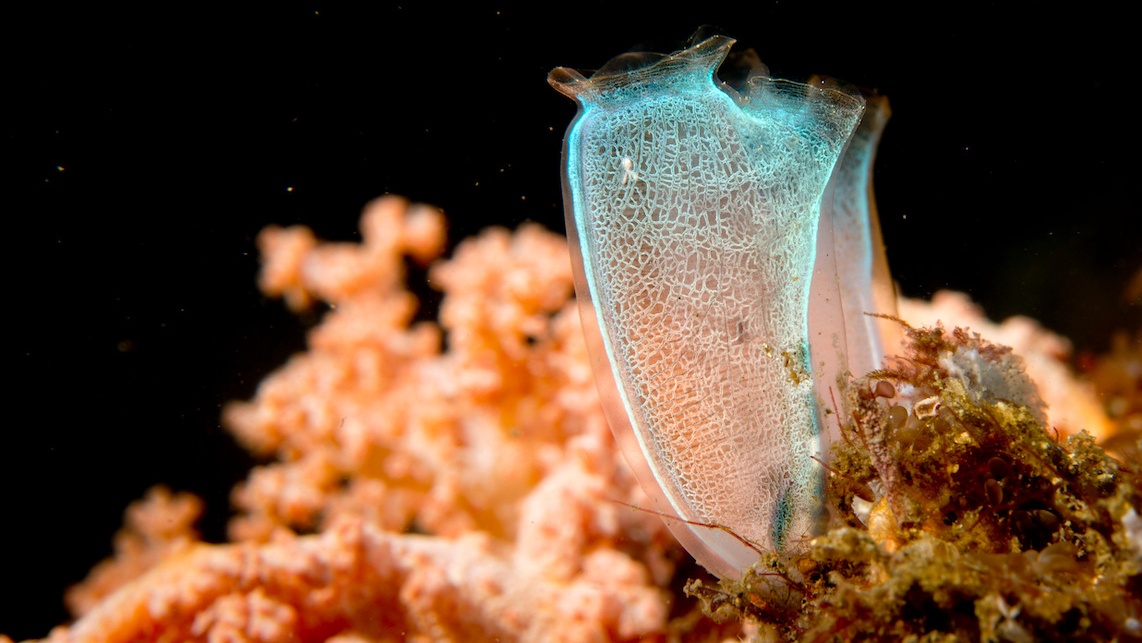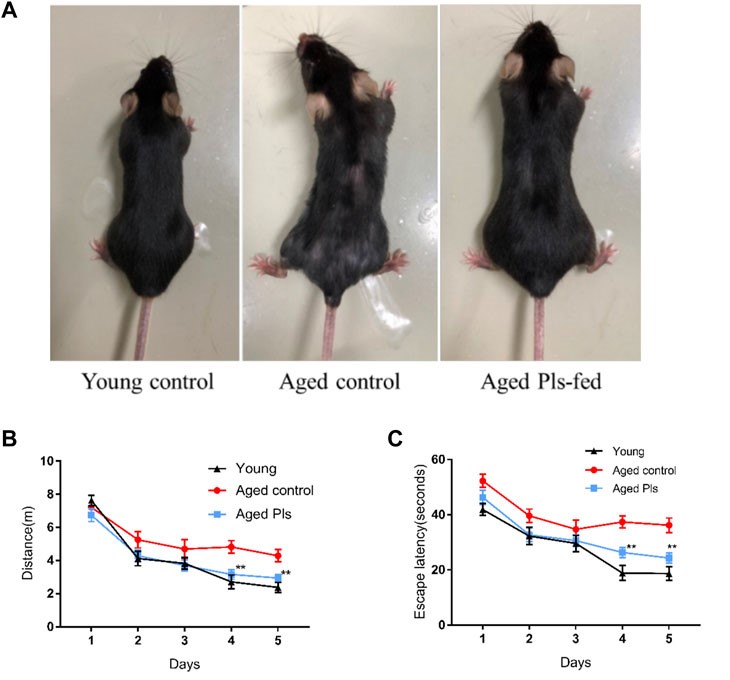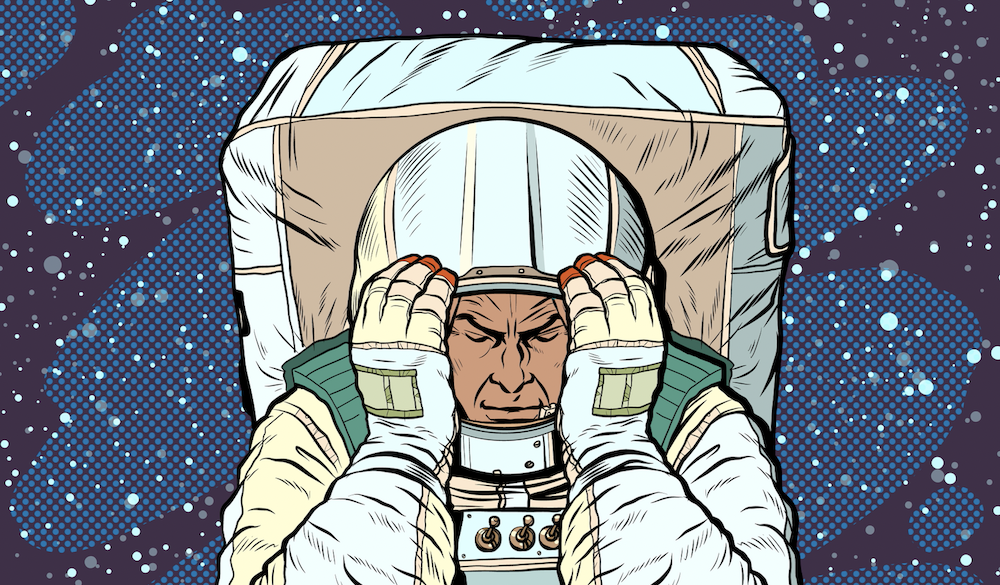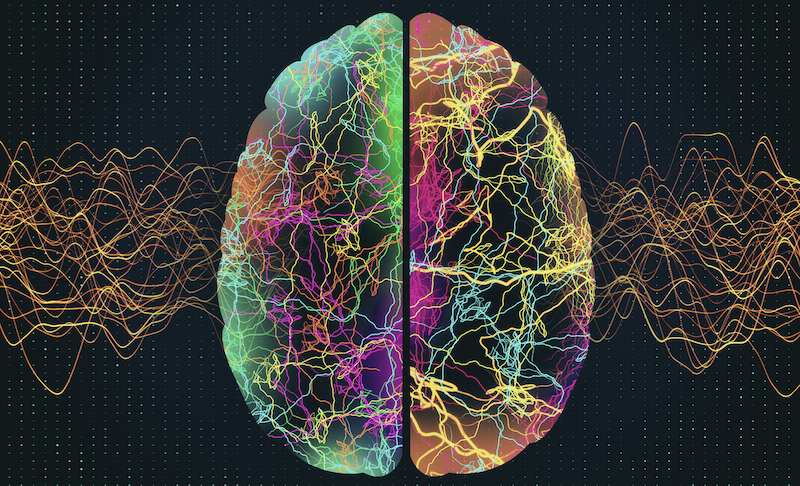Eat sea squirts for better memory and gorgeous hair?

- Sea squirts possess a high abundance of a molecule called plasmalogens, a molecule found in the membranes of brain, heart, and immune cells.
- Old mice that were fed plasmalogens for two months showed signs of improved memory, cognition, and hair health.
- Plasmalogen-consumption increased the expression of synaptophysin, a protein critical for building new neural connections.
Sea squirts aren’t exactly known for their impressive memory or lush, glossy hair. However, these little potato-shaped creatures are packed with a special nutrient that can improve aging-associated cognitive decline and even improve hair health, according to a new study published in Frontiers in Molecular Biosciences.
Sea squirts are rubbery blobs that fix themselves to rocks at the bottom of the ocean. This makes them appear plant-like, but they are actually relatively advanced animals. Although their capacity to squirt water is fascinating, Lei Fu, the lead author of the recent study, was more interested in the nutritional benefits of these delicious creatures. Sea squirts contain an unusually high amount of plasmalogens, a vital molecule that was largely ignored for over half a century.
Plasmalogens are everywhere, so they’re probably important.
Originally discovered in 1927, plasmalogens were unimpressive and received little attention outside a small niche of scientists. Over the next 60 years, these scientists slowly characterized the molecule. They discovered that plasmalogens were a type of phospholipid, molecules that group together to form cell membranes. Although the molecules had not shown any remarkable functionality, there was one interesting thing about them: they were everywhere. Scientists found plasmalogens in almost all human tissues, with an especially high abundance in some of the most important parts of the body: the brain, heart, and immune cells. This caught the attention of other scientists.
Given that plasmalogens were found in the brain, neurologists began to wonder if the ubiquitous phospholipid had a role in neurological disease. In 1995, a team of neurologists found that the brains of Alzheimer’s disease patients had a significant deficiency in plasmalogens. Over the next 25 years, scientists found that reduced levels of plasmalogens were associated with aging and several neurodegenerative diseases, including Parkinson’s disease, Niemann-Pick type C disease, multiple sclerosis, and Zellweger syndrome.
Fu and his colleagues were interested in whether eating plasmalogens from sea squirts prevented age-related cognitive decline in mice.
Plasmalogen-fed mice have better memory and gorgeous hair
To determine whether plasmalogens consumption improves age-associated memory declines, the scientists fed old mice (corresponding to about 56 human years) plasmalogens for two months. The researchers compared these plasmalogens-fed aged mice (PI-fed mice) to aged mice without plasmalogens in their diet and young mice (corresponding to about 20 human years).
They assessed the mices’ learning and memory using a Morris Water Maze — a pool of water that contains a hidden platform. Generally, mice are not fond of swimming. After five days of training in the pool, younger mice learned where the platform was and swam directly to it. Older mice, however, took longer to find the platform, suggesting a cognitive decline in aged mice.
Compared to aged controls, the Pl-fed mice found the platform significantly quicker, and they looked good doing it: The Pls-fed mice’s hair had become thick and glossy, whereas the age control mice’s hair was gray and thinning. This suggests that eating a plasmalogen-rich diet improved age-associated memory decline and hair health in mice.

Plasmalogens enhance the synaptic plasticity in the aged mice
Lu and his team wanted to know how plasmalogens were improving cognitive function, as it might reveal new strategies for combating age-associated decline. Previous researchers found that plasmalogens facilitate the fusion between membranes, an important process for creating new connections between neurons. During aging, our ability to create these connections, called synapses, declines and cognitive performance declines with it.
To determine whether a plasmalogen-rich diet affects synaptic structures, the researchers analyzed the mices’ hippocampus, which is the brain region responsible for learning and memory. Hippocampus from both young controls and aged Pls-fed mice contained far more synapses than aged control mice, suggesting that plasmalogen may enhance synaptic plasticity within the hippocampal system.
To further verify the alterations of synaptic plasticity, the scientists investigated the expression of synaptic plasticity-related protein, synaptophysin. The expression of synaptophysin was significantly increased in aged Pls-fed mice compared with that of the aged controls.
Professor Lei Fu, the corresponding author of the study, is so convinced by the results of this study that he takes a plasmalogen supplement each day, according to a press release.
“For the first time, we show that plasmalogen supplements might be a potential intervention strategy for halting neurodegeneration and promoting neuroregeneration,” said Fu. “The oral intake of plasmalogens could be a feasible therapeutic strategy to improve cognitive function in older people.”





